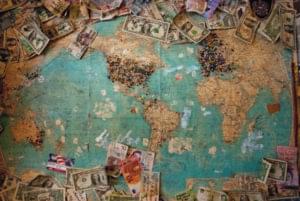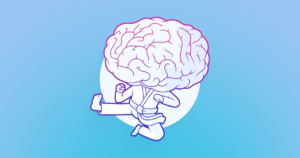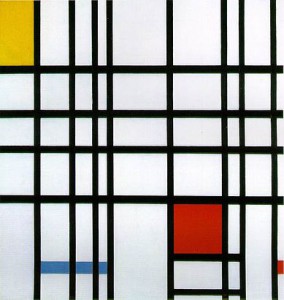Customer Journey Maps: A Day in the Life of a Customer

Key Takeaways
- A customer journey map is a research-based tool that examines the relationship between a customer and an organization, brand, or product over time, providing insight into typical customer interactions and potential future interactions.
- The creation of a customer journey map involves several steps, including defining organizational objectives, utilizing existing user research, mapping out touchpoints and channels, creating an empathy map, building an affinity diagram, sketching the customer journey, iterating and producing, and finally distributing and utilizing the map.
- A customer journey map can take any form or shape, but generally includes three key zones: the customer persona and scenario, the thoughts, actions, and emotional experiences of the user at each step of the journey, and insights from each step of the journey as well as any barriers customers may face.
- Customer journey maps are relevant across an entire organization, helping to align colleagues across various departments, break down operational silos, and improve the overall user experience by providing a holistic understanding of how customers should be treated.
Want to learn UX from the ground up? Get an entire collection of UX books covering fundamentals, projects, tips and tools & more with SitePoint Premium. Join now for just $14.99/month.
How do you measure customer engagement? Likes, clicks, and purchases are often the default metrics to turn to, but they don’t tell the whole story.
You need to know how much customers feel they’re in a relationship with your product, business or brand to truly measure customer engagement.
Is your product part of your customers’ daily lives? Does it fit harmoniously and instinctively into their world? Customer engagement is pivotal to UX design because of this, and one of the best tools to examine it is the customer journey map.
The customer’s perception is your reality. — Kate Zabriskie
What is a Customer Journey Map?
A customer journey map examines the relationship between a customer and an organization, brand, or product over time. It’s a research-based tool which takes all touchpoints and channels of interaction into account.

Now, you might be wondering how this is at all possible when no two customer journeys are the same. Rest assured in the knowledge that the goal is not to map out every single customer journey; it’s to generalize and give an insight into the “typical” journey of a customer. Doing so will not only provide insight into current interactions, but also shed light on the potential for future interactions with customers.
Customer journey maps can help you explore what customers think, feel, see, hear and do in relation to your business. This makes them invaluable when trying to provide stakeholders with an education into what customers perceive when they interact with your business. They have the ability to raise some interesting “what if” questions, possible answers to them, and — ultimately — some ways to improve the overall user experience.
Adam Richardson of Frog Design puts it like this in Harvard Business Review:
The more touchpoints you have, the more complicated — but necessary — such a map becomes. Sometimes customer journey maps are “cradle to grave,” looking at the entire arc of engagement.
As you can probably tell, this means customer journey maps are incredibly powerful and relevant across your entire organization. They can help align colleagues across UX design, marketing, customer service, sales, and logistics departments (just to name a few!) and enhance the holistic understanding of how customers should be treated. In this way, customer journey maps can help to break down operational silos and start to get the wheels turning in regards to a wider, customer-focused communication strategy.
Some Preparation is Required
You will need to do some preparation to get the most out of your customer journey map. Before you start to create one, you should try to have an understanding of the following:
- User personas: You won’t know if you’ve created a typical customer journey if you don’t know the general stories behind it.
- Timescale: The length of a customer journey largely depends on the type of product it involves. You’ll want to know whether to measure the journey over a week, year, or lifetime before you start!
- Customer touchpoints: What your customers do and how they interact with your brand.
- Channels in which actions occur: Where your customers interact with the business — be it via email, social media, or in-person, for example.
- Moments of truth: Any interaction during which a customer may form an impression of your brand or product are known as moments of truth.
- Any other actors: Friends, family, or colleagues may influence how a customer feels about a brand or product, and may therefore alter the customer experience.
How to Create a Customer Journey Map
Once your preparation is taken care of, you can follow the eight-point process below to develop your customer journey map.
-
Create organizational objectives
It’s essential you know what the purpose of the customer journey map is before you start to build it out. The first step is therefore to outline your goals for this mapping exercise and what organizational needs you intend to meet.
-
Utilize existing user research
You might be in a position where you have a bunch of user research at your fingertips. Fantastic news if that’s the case! If you’re not quite there, be creative and consider how you can carry out research that will help you define your customers’ journey.
-
Map out touchpoints and channels
This is where a lot of your preparation will come in handy. You need to effectively map out all touchpoints and channels so you end up with a full overview of where your customers interact with your brand or product, and the channels by which they do this. A great way to build on this stage is to brainstorm and see if there are any touchpoints or channels you’ve missed in your initial round of data collection.
-
Create an empathy map
You’ll start to uncover how your customers feel during each interaction with your brand or product through the creation of an empathy map. Make sure to focus on how your customers feel and think, and what they say, do, and hear in any given situation.
-
Build an affinity diagram
This is the point at which you’ll start to group ideas, concepts, and feelings from the previous stages into categories. You can give these categories labels and brainstorm around each of them further before you start to create a diagram which links them all together. What’s good to note is that you can also eliminate the ideas, concepts, and feelings which don’t seem to have any impact on customer experience at this stage.
-
Sketch the customer journey
The form your customer journey map takes is now open to interpretation. You may want to build a timeline which brings the journey together over time. You may even want to turn the map into a video, audio clip, or animation — it’s completely up to you! You’ll be on the right lines as long as you show customer movements through touchpoints and channels over time, partnered with how they feel about each interaction along that journey. That is, the customer journey map should include the outputs of your empathy map and affinity diagram.
-
Iterate and produce
As with all good design processes, you must move through phases of iteration. Take some time to refine the content of your sketches to ensure every part contains something useful. Your aim is to end up with a customer journey map which is visually appealing and useful to a wide variety to people — starting with your team members and stakeholders. You may even want to get a graphic designer on board at this stage if your skills don’t stretch in that direction.
-
Distribute and utilize
Your customer journey map won’t fulfill its purpose if it remains on your hard drive or under a pile of paper on your desk. The final stage of the process is to get it out to the masses and explain why it’s important as you do so. This is the only way all your hard work will get put to good use! For example, you should be able to define KPIs (key performance indicators) around the ideal customer journey and measure future success as you work to improve the journey.
What Does a Customer Journey Map Look Like?
A customer journey map is open to interpretation and can take any form or shape you like, as mentioned in stage six of the process above. The Interaction Design Foundation produces a wide variety of templates that are free to access, use, and distribute (with fair recognition) — and their customer journey map template is worth a look in this context. You’ll see it’s split into three key zones:
-
Zone 1: The persona this customer journey refers to, and the scenario the map describes.

-
Zone 2: Where you can capture the thoughts, actions and emotional experiences of the user, at each step of the journey. These are based on the results of the qualitative user research you carry out and can include a variety of resources including quotes, images and videos. Remember to discuss both touchpoints and channels in this section — that is, details of the customer interactions as well as where and how the interactions take place (such as in person, via email, on the website, and so on).

-
Zone 3: The bottom section is a place to identify the insights from each step of the journey as well as any barriers customers may face when trying to progress to the next step. You may want to turn these opportunities into action points for internal team members to handle.

In Summary
A customer journey map is a research-based tool that provides powerful insights and intimate knowledge about a “typical” customer journey. It enables you to see what your brand or product looks like from the user’s point of view, and you can translate this empathy into a design that better accommodates your customers’ needs and removes (or alleviates) as many pain points as possible.
Every stakeholder who views it will get the chance to contribute towards an improved customer experience. In this way, customer journey maps are relevant across an entire organization — to align customer perception and treatment, and improve the overall user experience.
The Interaction Design Foundation (IDF) is a nonprofit organization on a mission to make design education accessible and affordable. Their range of UX design courses are completely online and self-paced, and provide industry-recognized Course Certificates which are backed by the world’s strongest authority on UX design.
This piece is based on Customer Journey Maps – Walking a Mile in Your Customer’s Shoes.
Frequently Asked Questions (FAQs) about Customer Journey Maps
What are the key elements to include in a customer journey map?
A customer journey map should include the following key elements: customer personas, stages of the journey, customer touchpoints, customer emotions, and opportunities for improvement. The customer persona represents your target audience, while the stages of the journey represent the different steps the customer takes when interacting with your brand. Touchpoints are the points of interaction between the customer and your brand. Mapping out the customer’s emotions at each stage can help identify areas where the customer experience can be improved.
How can I use a customer journey map to improve customer experience?
A customer journey map can be used to identify areas where the customer experience can be improved. By understanding the customer’s emotions at each stage of the journey, you can identify pain points and opportunities for improvement. This can help you prioritize areas for improvement and develop strategies to enhance the customer experience.
What is the difference between a customer journey map and a persona?
A customer journey map and a persona are both tools used in user experience design, but they serve different purposes. A persona is a fictional representation of your target audience, while a customer journey map is a visual representation of the customer’s experience with your brand. The persona helps you understand who your customers are, while the journey map helps you understand how they interact with your brand.
How often should I update my customer journey map?
The frequency of updating your customer journey map depends on various factors such as changes in customer behavior, introduction of new products or services, or changes in the market. However, it’s generally recommended to review and update your journey map at least once a year.
Can I create different customer journey maps for different customer personas?
Yes, it’s often beneficial to create different journey maps for different customer personas. Each persona represents a different segment of your target audience, and each segment may have a different journey. Creating separate journey maps for each persona can help you better understand and cater to the unique needs of each segment.
How detailed should my customer journey map be?
The level of detail in your customer journey map depends on your specific needs and goals. However, it’s important to include enough detail to accurately represent the customer’s experience and identify opportunities for improvement. This typically includes details about the customer persona, stages of the journey, touchpoints, and customer emotions.
What tools can I use to create a customer journey map?
There are many tools available for creating customer journey maps, ranging from simple pen and paper to specialized software. Some popular digital tools include Adobe XD, Sketch, and Microsoft Visio. These tools offer templates and features that can help you create a detailed and visually appealing journey map.
How can I validate the accuracy of my customer journey map?
You can validate the accuracy of your customer journey map by conducting user research. This can include surveys, interviews, and usability testing. The feedback from users can help you verify whether your journey map accurately represents their experience.
Can a customer journey map help me identify opportunities for upselling and cross-selling?
Yes, a customer journey map can help you identify opportunities for upselling and cross-selling. By understanding the customer’s journey, you can identify stages where the customer might be open to additional products or services. This can help you develop strategies to increase sales and customer satisfaction.
How can a customer journey map help me improve customer retention?
A customer journey map can help you improve customer retention by identifying areas where the customer experience can be improved. By addressing these areas, you can enhance customer satisfaction and loyalty, which can lead to increased retention.
Mads Soegaard is the editor-in-chief at Interaction-Design.org. He has previously worked at The Danish National Technological Institute, Csite.com, the eBusiness Think Tank of Daimler, and as a university lecturer.
Published in
·Canvas & SVG·Design·Design & UX·HTML & CSS·HTML5·Illustration·Technology·January 21, 2015
Published in
·AngularJS·Animation·App Development·Design·Mobile·Mobile Web Development·August 1, 2014





